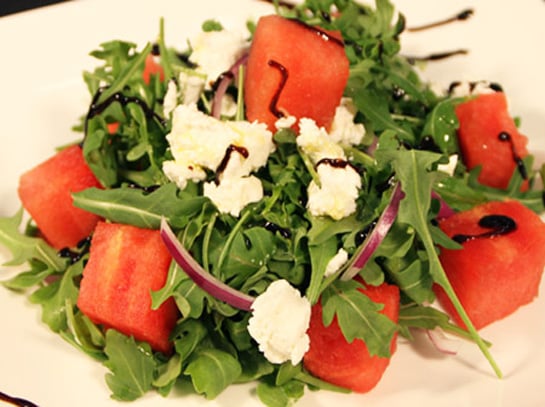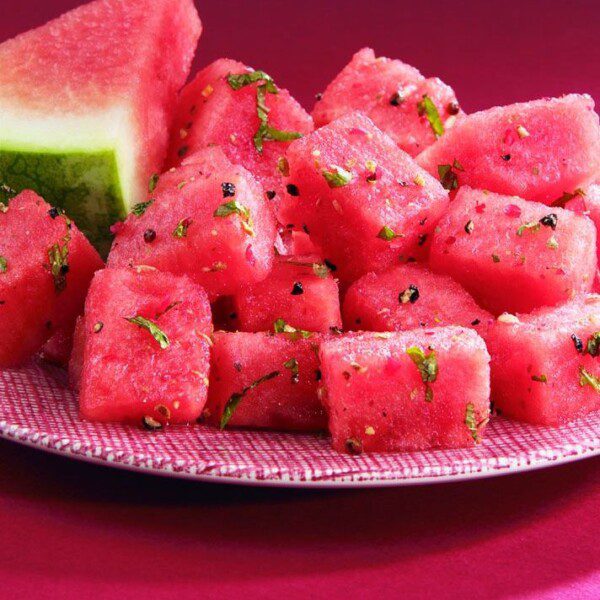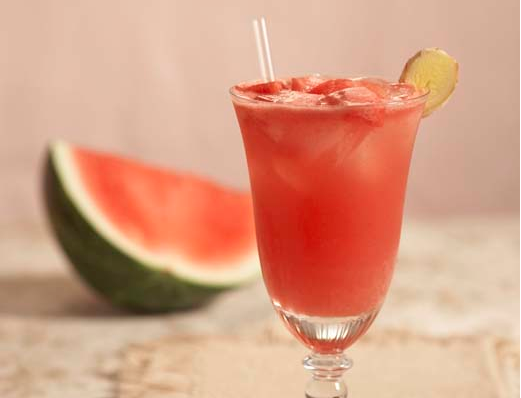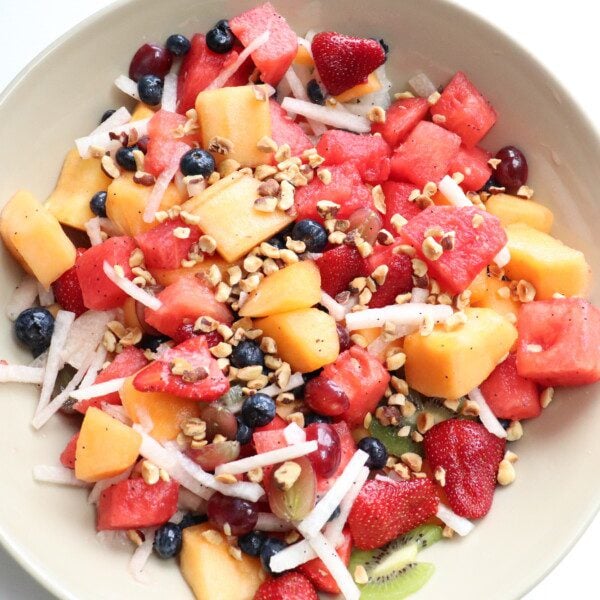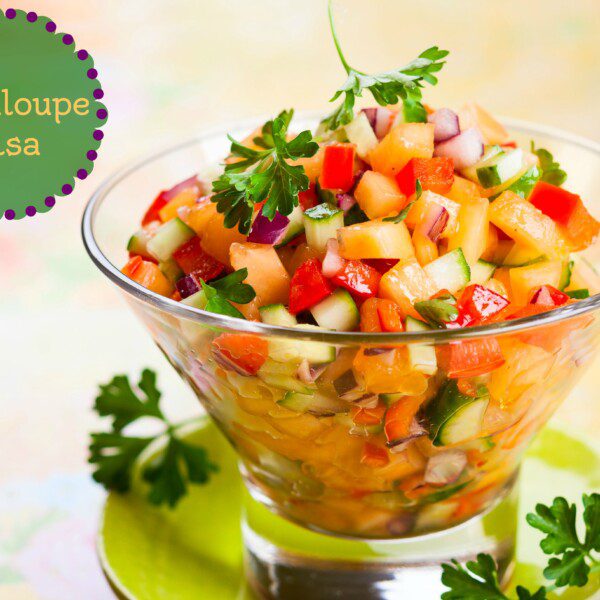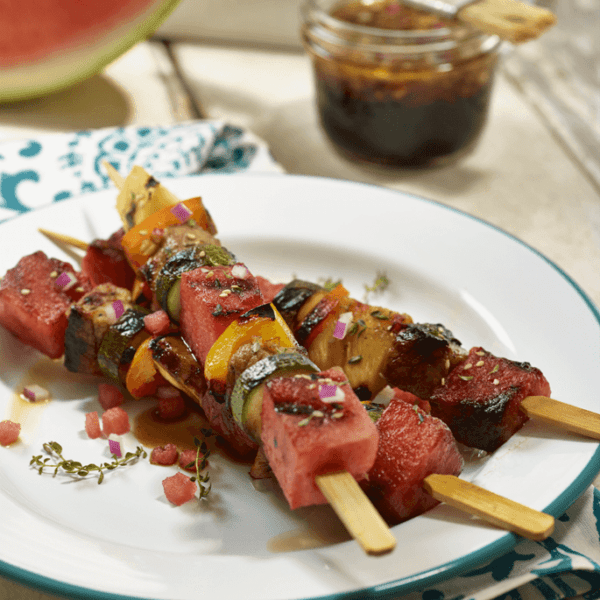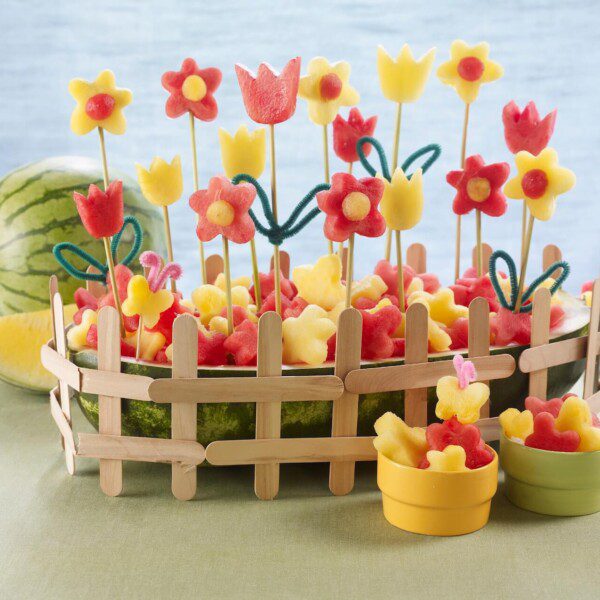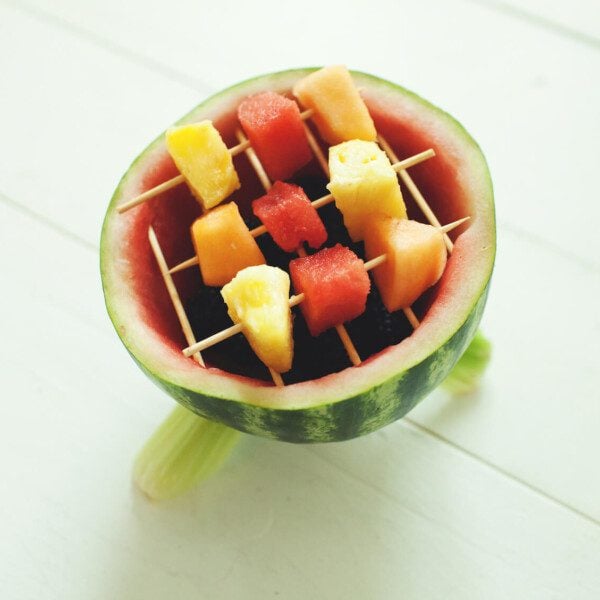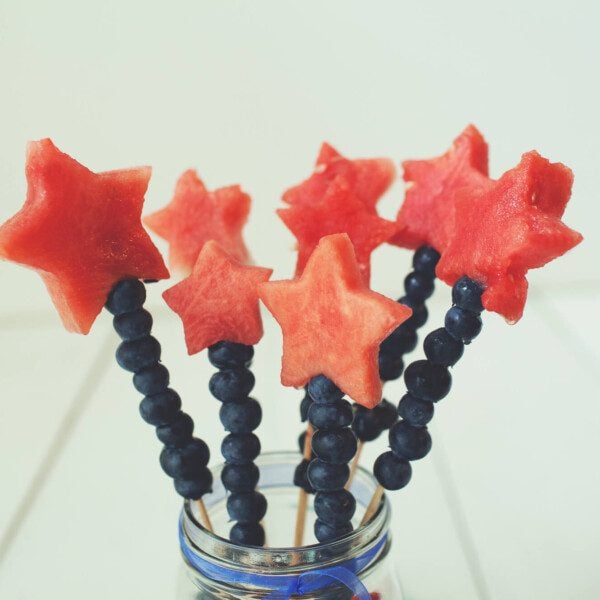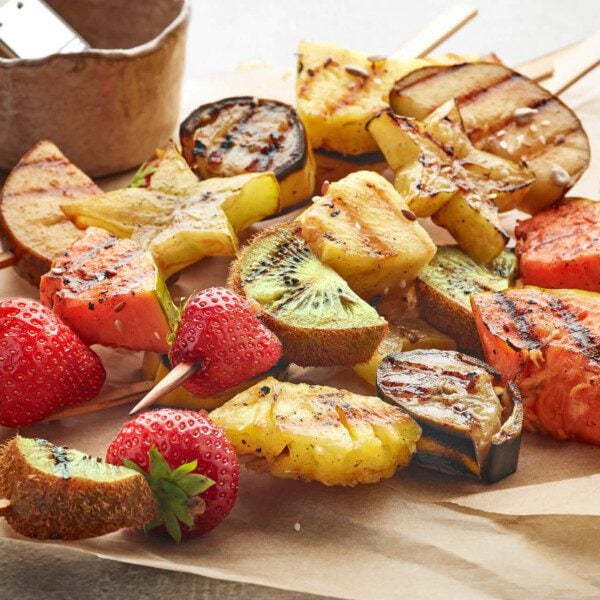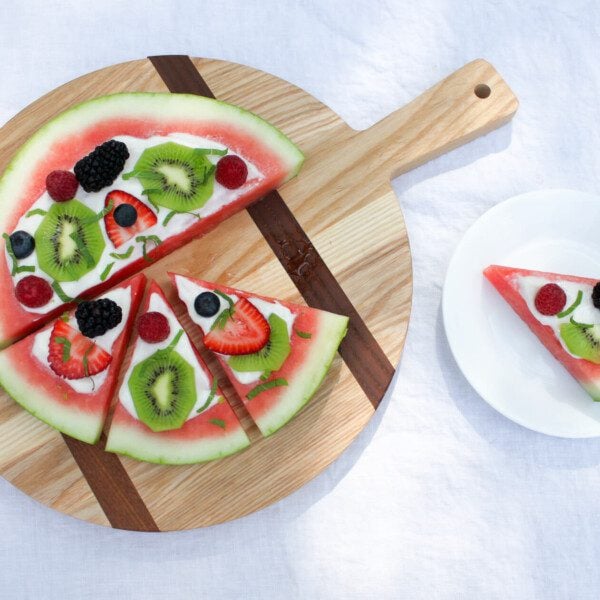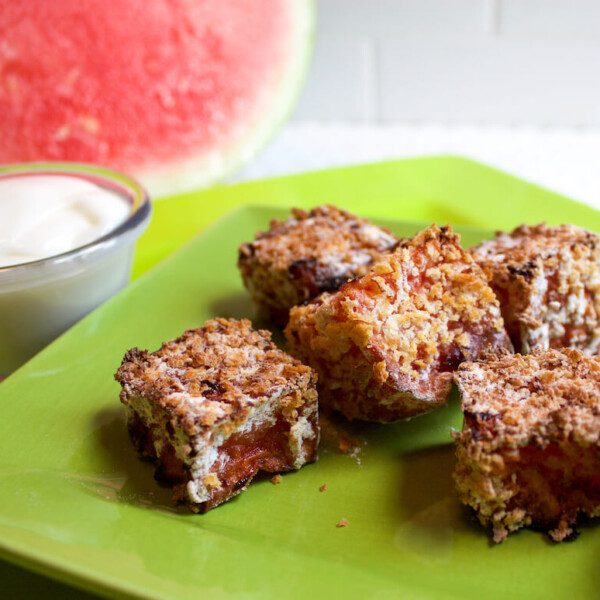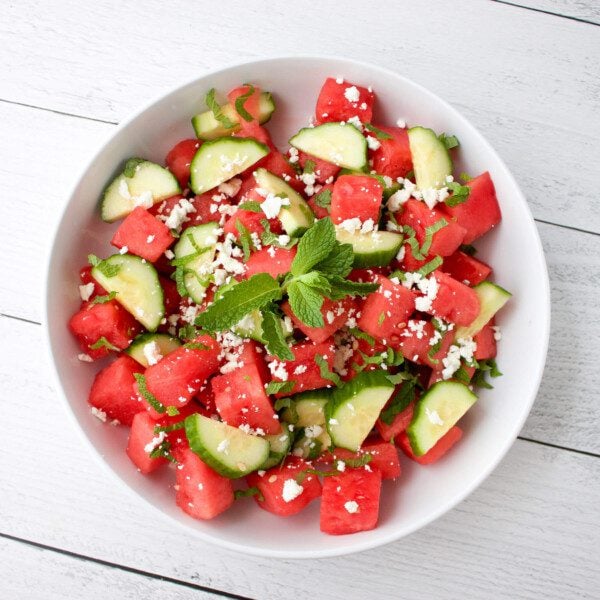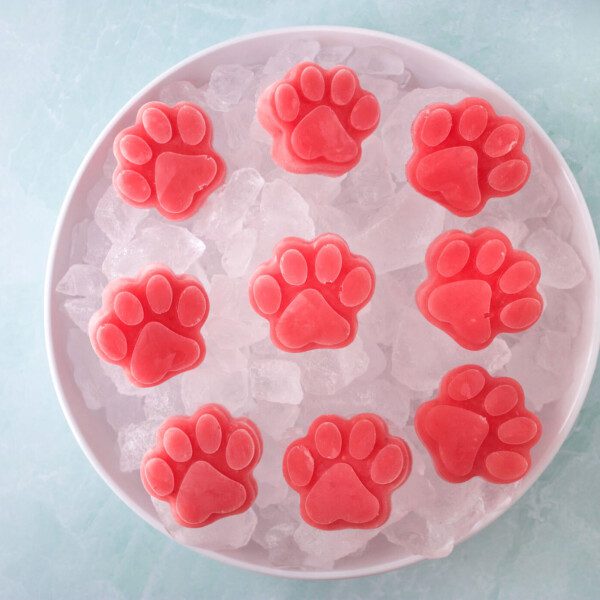How to Select Watermelon
- Watermelon may be round or oval in shape, but they should have a firm and symmetrical shape. Avoid those with dents, bumps, or cuts.
- Lift up the watermelon to check its weight. It should feel heavy for its size. Choose the heaviest one you find, as it’s likely to be the juiciest.
- A large yellow spot should be present on the melon and is called the “field spot”. This is the side the melon rested on while it was growing. Look for a large yellow spot, which indicates that the melon spent a lot of time ripening. A smaller white spot is a sign that the melon may not have been allowed to ripen.
- Knock on or slap the melon (but not too hard!). You should hear a deep thump, which indicates that the melon is ripe and juicy. A hollow or flat sound can mean the melon is overripe.
How to Store Watermelon
- Store a whole watermelon on your counter out of sunlight for up to two weeks.
- If you slice your watermelon in half, you can store the unused portion in the refrigerator. Wrap the cut end in plastic to prevent drying and keep it from picking up the flavors of other foods in your fridge.
- Diced watermelon should be stored in a sealed container. Sliced or diced watermelon should always be kept in the refrigerator and used within three to four days.
- Watermelon can be frozen for up to six months. Flash freeze watermelon by dicing it then placing the cubes in a single layer on a baking sheet in the freezer. Allow them to freeze for two hours before transferring them to a sealed plastic bag.
How to Serve Watermelon
Recipes
Hot and Sweet Watermelon
Recipes
Watermelon Cooler
Recipes
Hazelnut Fruit Salad
Recipes
Cantaloupe Salsa
Father's Day
Father’s Day Watermelon Grill
Entertaining
Patriotic Fruit Wands
Round-Ups
Recipes for the Whole Watermelon
Recipes
